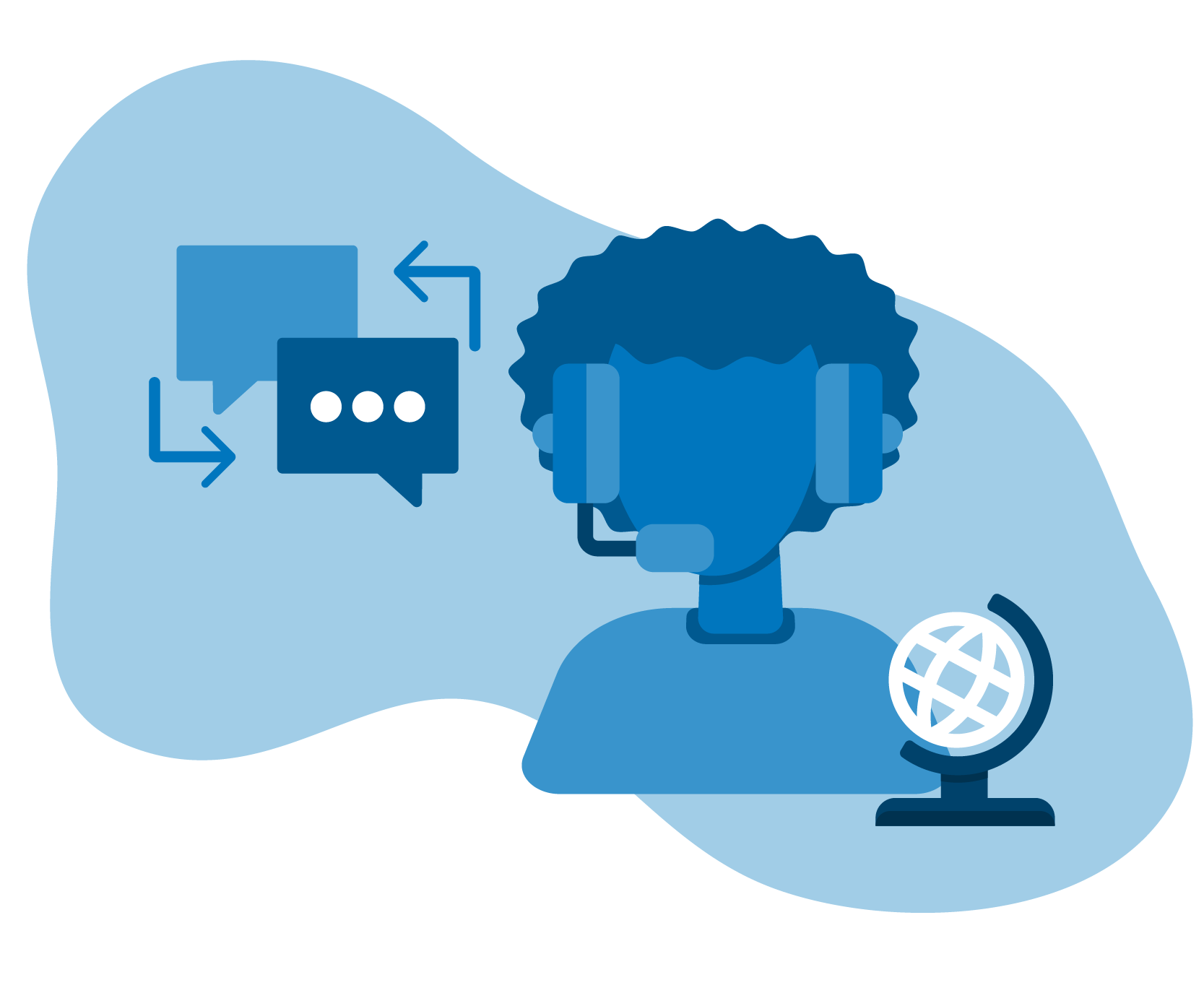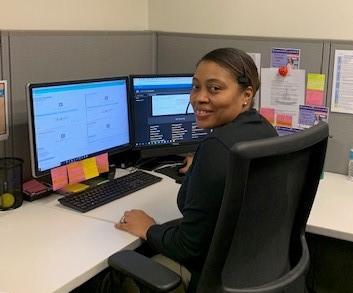FY20 Annual Report: Central Operations
Health Equality Through Language Services

A review of Johns Hopkins Community Physicians (JHCP) central operations’ fiscal year 2020 achievements indicates that there is nothing they cannot do: from supporting practice builds and expansions, to employing online scheduling functionality, to implementing multiple new systems and workflows. One area of focus that received a lot of attention in fiscal year 2020 was Language Services.
According to federal and state laws, Joint Commission Standards and Johns Hopkins policy, equal access and communication assistance will be provided to all patients with communication needs and those assisting them in the provision of care. That is because language access plays a major role in patient safety. “It ensures that all patients understand and can actively participate in their care,” says central operations project manager Danielle Scott. In addition to unifying workflows with Johns Hopkins Medicine Language Services, the central operations team completed three main initiatives: the creation of a bilingual patient access specialist position, deployment of additional hardware options for practices and the development of interpreter request workflow documentation for video visits.
The first tactic employed for improving Language Services was the recruitment of two bilingual patient access specialists for the Central Scheduling Intake (CSI) team. This allowed CSI to create a dedicated line for Spanish-speaking patients. Any time another patient access specialist or a practice received a call from a Spanish-speaking patient, they could transfer them directly to this dedicated line, allowing patients to schedule or cancel appointments, request prescription refills or enquire about test results in their preferred language. Scott and Kathy Picarelli, director of central operations and practice operations improvement, note that this reduced hold times and was much quicker than waiting to reach an interpreter from Cyracom, the interpretation services contractor used by Johns Hopkins Medicine. This has been a huge patient satisfier. “We always say that our CSI agents are the first voice and first impression of JHCP,” says Scott. How impactful it is that that first voice is now available in Spanish.
 Geraldine Baltazar-Mitchell, former bilingual patient access specialist
Geraldine Baltazar-Mitchell, former bilingual patient access specialistOne of the two original bilingual patient access specialists, Geraldine Baltazar-Mitchell, who now serves as a bilingual medical office assistant at East Baltimore Medical Center (EBMC), says that in her previous role, she helped Spanish-speaking patients establish trust and access high-quality care. “I loved when new patients called and said they were referred by a family member or friend who recently established care,” she says. “I could always tell how satisfied the last patient was with their experience by the compliments that were given by the new patients.”
"These language services and translation options provide peace of mind for our patients."
Another focus by the central operations team was the deployment of additional hardware to practices, namely cordless phones used for interpreter interactions. The phones come in pairs – one for the provider or medical staff member, the other for the patient. Cyracom is on speed dial for connecting with an interpreter. These phones have been distributed to four practices: Odenton, Remington, Heart Care Bethesda and EBMC. “The cordless phones are a critical part of our workflows among the medical assistants, medical office assistants and providers,” says Paul McDermott, administrative supervisor at EBMC. They have been an increasingly useful resource since the start of the pandemic, he explains, because one of their translation carts has been dedicated to a front entrance screening station. “These language services and translation options provide peace of mind for our patients,” he says. “Our patients know they are being understood [and Cyracom] also provides a level of comfort and security to our team members.”
Finally, as use of video visits greatly increased, central operations partnered with Language Services to create a workflow for incorporating interpreters into video visits. Maggie Kim, project administrator for central operations, explained the simple process that would allow video interpretation for American Sign Language, Spanish, Mandarin, Russian, Arabic, Nepali, French, Korean, Hindi and Urdu. All a medical staff member has to do is schedule the appointment, get the video visit room link and submit a request form to the Language Services team, she says. Phone-only interpretation was also made available.
“We have a responsibility not to discriminate or exclude patients from treatment based on their language-service needs,” says Picarelli. These initiatives, along with others, like management of the qualified bilingual staff program, video remote interpretation (VRI) carts and other projects in collaboration with centralized Johns Hopkins Medicine Language Services, have a huge impact on patient safety, patient satisfaction and overall health equity.
